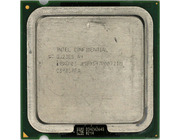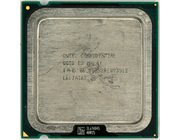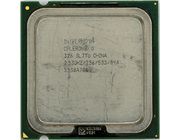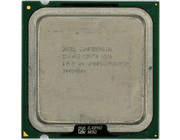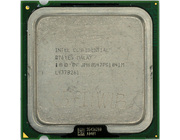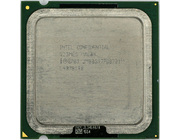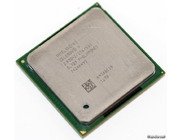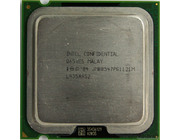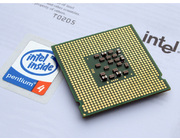Prescott, Intel's successor to the 130nm Northwood-core. It featured double the L2-cache (1024KB) and double L1-cache (16KB), SSE3 instructions and a better branch prediction. Features that sound performance improving but Intel also made changes to the chip to get higher clock frequencies and those changes degraded performance: the pipeline after the trace cache was longer from 21 steps to 31. This change should get Prescott to clock frequencies up to 5GHz.
| Intels' then new 90nm manufacturing process had issues with the Prescott. The processor had a tremendous energy consumption which limited clock frequencies. Despite all the improvements a 2.8GHz Prescott performed less than the older 2.8GHz Northwood. Both performance and power consumption weren't better. After a few improvements (E-stepping) Intel managed to control the power consumption a lot better and considering the fact that Intel could fabricate the Prescott a lot cheaper (smaller process, bigger wafer), Intel could go on with the Prescott for a while. Prescott would have been followed by Tejas, an even 'bigger' CPU based on the Netburst architecture with an even higher energy consumption, higher clock frequencies and eventually better performance. As development went on Intel 'found out' that their Pentium-M (loosely said; based on the Pentium III) actually performed better than the Pentium 4. Intel went on developing the Core Duo and Core 2 Duo and just before the first engineering samples of the Pentium 4 'Tejas' should have been taped out, Intel pulled the plug on the Tejas project. Wise move from Intel, but I still wonder what the first samples of Tejas would do ... |  Prescott die. |
